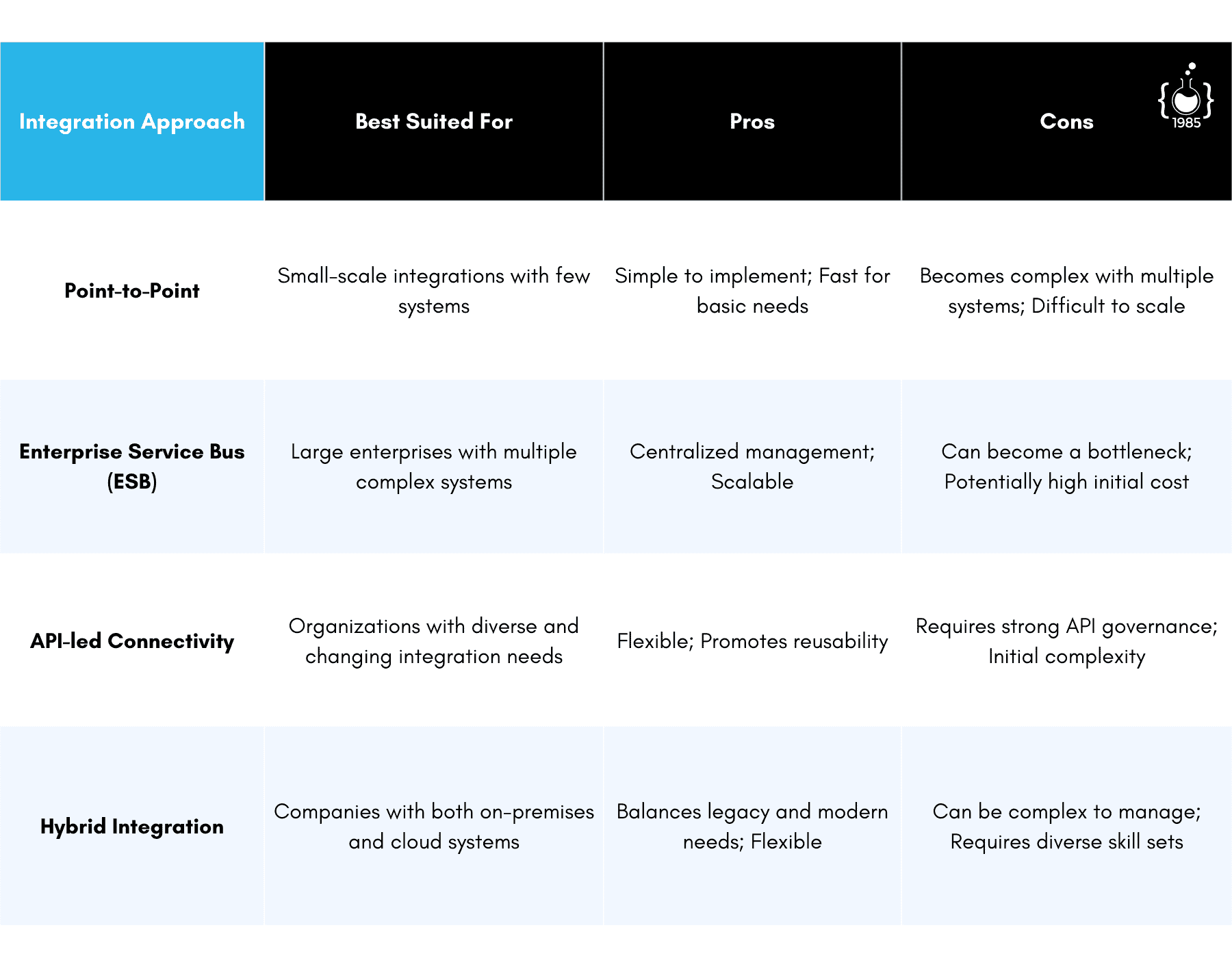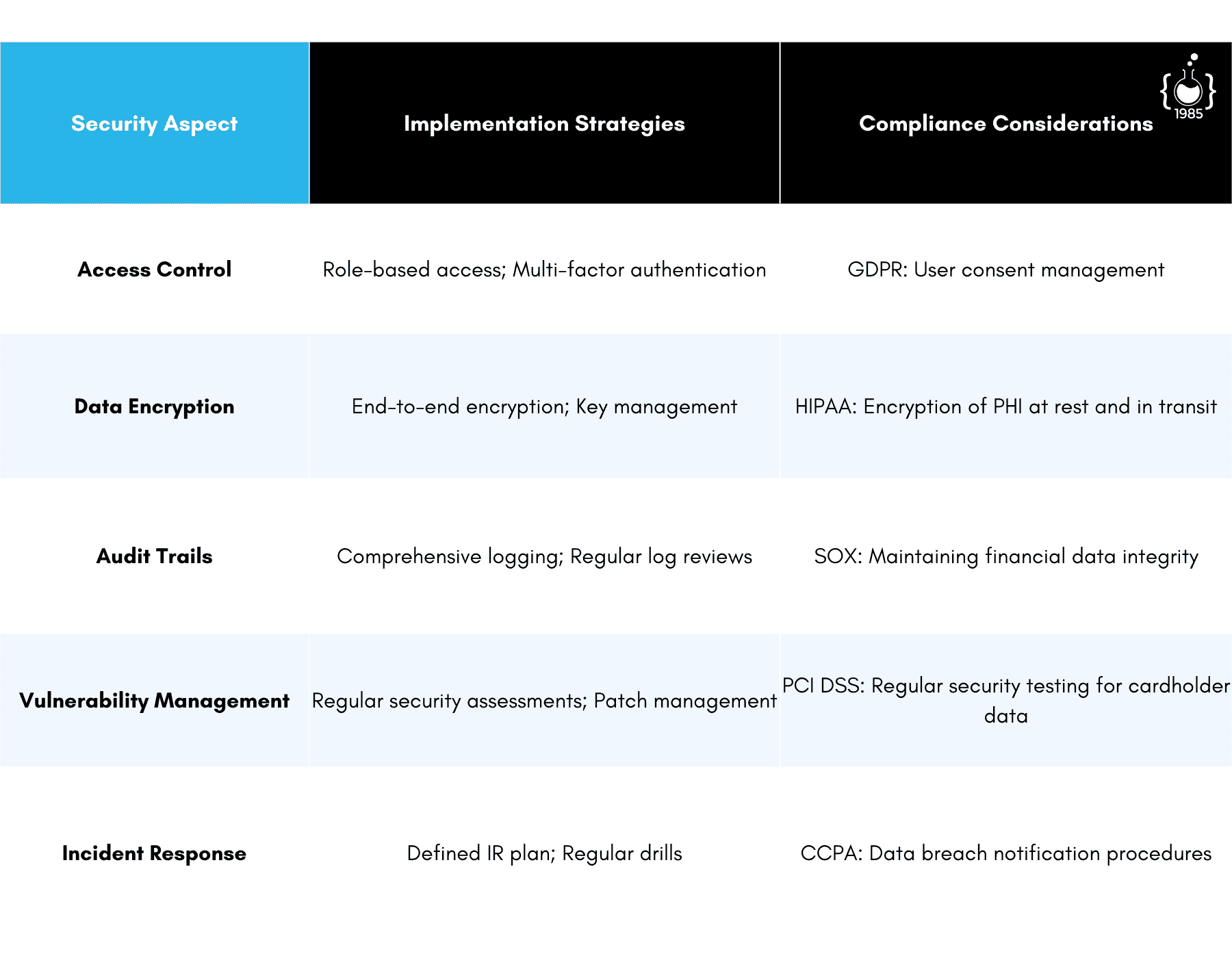How to Effectively Integrate New Software with Existing Systems
Don't let clashing systems slow you down – discover the art of harmonious software integration here!

Let me take you back to 2015. We'd just landed a big client - a multinational with offices in 12 countries. They wanted to integrate a new CRM system across their entire operation. Sounds simple, right? It wasn't. Their existing infrastructure was a patchwork of legacy systems, some older than the employees using them. The project was a ticking time bomb of compatibility issues, data migration nightmares, and user resistance.
But we did it. And we learned a lot in the process.
Since then, I've guided countless companies through the labyrinth of software integration. I've seen the good, the bad, and the downright ugly. I've celebrated victories and learned from failures. And I'm here to tell you that integrating new software with existing systems is both an art and a science. It's a delicate dance of technology and human psychology, of bits and bytes meeting flesh and blood.
In this post, I'm going to share the hard-won lessons from the trenches. I'll show you how to navigate the minefield of integration without losing your mind (or your job). We'll explore strategies that work, pitfalls to avoid, and real-world examples that bring it all to life.

Understanding the Integration Imperative
Before we dive into the how, let's address the why. In an era where digital transformation is not just a buzzword but a business imperative, the need to integrate new software with existing systems is more pressing than ever. Whether it's adopting a cutting-edge CRM to streamline customer interactions, implementing an AI-driven analytics platform to gain deeper insights, or overhauling your entire ERP system, the goal is clear: to enhance efficiency, drive innovation, and maintain a competitive edge.
However, the reality is that many organizations struggle with this process. A study by McKinsey found that 70% of complex, large-scale change programs don't reach their stated goals. The reasons are multifaceted, ranging from technical incompatibilities to human resistance to change. But fear not – with the right approach, successful integration is not only possible but can be a catalyst for unprecedented growth and efficiency.

The Integration Roadmap: A Strategic Approach
1. Comprehensive Assessment and Planning
The foundation of any successful integration lies in thorough assessment and meticulous planning. This phase is crucial and often underestimated. It involves:
System Audit: Start with a comprehensive audit of your existing systems. This isn't just about listing your software; it's about understanding the intricate web of how these systems interact, their data flows, and their role in your business processes.
I once worked with a mid-sized e-commerce company that wanted to integrate a new inventory management system. During the audit, we discovered that their existing system was deeply intertwined with their custom-built CRM in ways that weren't immediately apparent. Overlooking this would have led to significant disruptions in their order fulfillment process.
Needs Analysis: Clearly define what you need from the new software and how it will interact with existing systems. This involves engaging with stakeholders across different departments to understand their requirements and pain points.
Compatibility Assessment: Evaluate the technical compatibility of the new software with your existing infrastructure. This includes assessing API availability, data format compatibility, and integration capabilities.
Risk Assessment: Identify potential risks and challenges. This could range from data migration issues to business continuity risks during the transition period.
Resource Allocation: Determine the resources needed – both in terms of technology and personnel. This might involve identifying skills gaps in your team and planning for training or external expertise.

2. Choosing the Right Integration Approach
There's no one-size-fits-all approach to software integration. The method you choose depends on various factors, including your existing architecture, the nature of the new software, and your long-term IT strategy. Here are some common approaches:
Point-to-Point Integration: This involves directly connecting two systems. It's straightforward for simple integrations but can become complex and difficult to maintain as the number of integrated systems grows.
Enterprise Service Bus (ESB): An ESB acts as a communication system between different software applications. It's more scalable than point-to-point and offers better manageability for complex integrations.
API-led Connectivity: This approach uses APIs as building blocks to connect applications, data, and devices. It offers great flexibility and is particularly useful in microservices architectures.
Hybrid Integration: This combines on-premises and cloud-based integration methods, offering flexibility and scalability.
The choice of approach can significantly impact the success of your integration. For instance, a large manufacturing client of ours initially opted for a point-to-point approach to integrate their new supply chain management software. However, as they expanded and needed to integrate more systems, this approach became unwieldy. We helped them transition to an API-led connectivity model, which not only solved their immediate integration challenges but also positioned them for easier future integrations.
3. Data Migration and Management
Data is the lifeblood of modern businesses, and managing it during integration is crucial. Here's what to focus on:
Data Cleaning and Preparation: Before migration, clean your data. Remove duplicates, correct inaccuracies, and ensure consistency. This step is often underestimated but is critical for the new system's effectiveness.
Mapping Data Fields: Carefully map how data fields in your existing system will translate to the new system. This isn't always a one-to-one correspondence and may require some creative problem-solving.
Testing Data Migration: Conduct thorough testing of data migration in a staged environment. This helps identify issues before they impact your live systems.
Data Governance: Establish clear data governance policies. Define who has access to what data and how data will be managed across integrated systems.
A financial services firm we worked with learned this lesson the hard way. They rushed through data migration when integrating a new CRM, resulting in numerous customer records being incorrectly merged or lost. The cleanup process took months and significantly delayed the realization of benefits from the new system.

4. Security and Compliance Considerations
Integrating new software often means opening up your systems to new connections, which can create security vulnerabilities if not properly managed. Additionally, depending on your industry, you may need to ensure that the integration process complies with relevant regulations.
Security Assessment: Conduct a thorough security assessment of the new software and the integration points. This should include vulnerability scanning and penetration testing.
Compliance Check: Ensure that the integration process and the resulting system comply with relevant industry standards and regulations (e.g., GDPR, HIPAA).
Access Control: Implement robust access control mechanisms. This is particularly important when integrating systems that handle sensitive data.
Encryption: Ensure that data is encrypted both in transit and at rest, especially when integrating cloud-based solutions with on-premises systems.
Audit Trails: Implement comprehensive logging and audit trails to track data access and changes across integrated systems.
We once worked with a healthcare provider integrating a new patient management system. The integration process initially overlooked some key HIPAA compliance requirements. Catching this early in the security assessment phase saved them from potential legal and financial repercussions.
5. User Training and Change Management
The technical aspect of integration is only half the battle. Ensuring that your team is ready and willing to adopt the new integrated system is equally crucial.
Stakeholder Engagement: Involve key stakeholders from the beginning. Their input can be invaluable in identifying potential issues and ensuring the integrated system meets actual business needs.
Comprehensive Training: Develop a robust training program. This should cover not just how to use the new software, but how it integrates with existing systems and workflows.
Phased Rollout: Consider a phased approach to implementation. This allows you to address issues in smaller, more manageable chunks and builds user confidence gradually.
Feedback Loops: Establish clear channels for user feedback during and after integration. This helps in quickly identifying and addressing issues.
Champions Program: Identify and nurture "champions" within different departments who can advocate for the new system and support their peers.
A manufacturing client of ours initially faced significant resistance when integrating a new inventory management system. By implementing a champions program and a phased rollout approach, we were able to turn the tide. The champions became instrumental in showcasing the benefits of the new system to their colleagues, significantly boosting adoption rates.
6. Continuous Monitoring and Optimization
Integration is not a "set it and forget it" process. It requires ongoing attention and optimization.
Performance Monitoring: Implement tools to monitor the performance of your integrated systems. Look for bottlenecks, errors, and areas for improvement.
Regular Audits: Conduct regular audits of your integrated systems to ensure they continue to meet business needs and compliance requirements.
Iterative Improvements: Based on monitoring and feedback, continuously refine and improve the integration. This might involve tweaking data flows, optimizing processes, or even re-evaluating the integration approach.
Scalability Planning: As your business grows, your integration needs may change. Regularly assess whether your current integration approach can scale with your business needs.
Real-World Integration Success Story
Let me share a success story that illustrates these principles in action. We worked with a mid-sized retail chain that was struggling with disconnected systems across their online and brick-and-mortar stores. Their inventory management, point-of-sale systems, and e-commerce platform were operating in silos, leading to inventory discrepancies, fulfillment delays, and a fragmented customer experience.
Our approach:
- We started with a comprehensive audit of their existing systems, mapping out data flows and identifying key pain points.
- Based on this assessment, we designed an API-led integration approach, creating a middleware layer that could connect their diverse systems while allowing for future scalability.
- Data migration was a critical phase. We implemented a staged approach, cleaning and mapping data carefully before migration. This involved reconciling inventory data across systems, which uncovered and resolved numerous long-standing discrepancies.
- Security was paramount, especially given the sensitive nature of customer and payment data. We implemented end-to-end encryption and robust access controls.
- For user adoption, we developed a comprehensive training program and identified champions in each store to support the rollout. We also created a feedback mechanism for store staff to report issues or suggest improvements.
- Post-implementation, we set up real-time monitoring dashboards to track system performance and data consistency across platforms.
The results were transformative:
- Inventory accuracy improved from 80% to 98%.
- Order fulfillment times were reduced by 40%.
- Staff reported a 50% reduction in time spent on inventory-related tasks.
- Customer satisfaction scores increased by 25%, largely due to improved online-to-store experiences.
Conclusion
Integrating new software with existing systems is a complex but necessary journey in today's digital landscape. It requires a strategic approach that goes beyond mere technical implementation. By focusing on thorough planning, choosing the right integration approach, managing data effectively, prioritizing security and compliance, engaging users, and committing to continuous improvement, organizations can turn the challenge of integration into an opportunity for significant business transformation.
Remember, the goal isn't just to connect systems; it's to create a cohesive, efficient, and scalable technology ecosystem that drives your business forward. With the right approach and mindset, you can navigate the complexities of software integration and emerge with a more robust, efficient, and future-ready organization.



